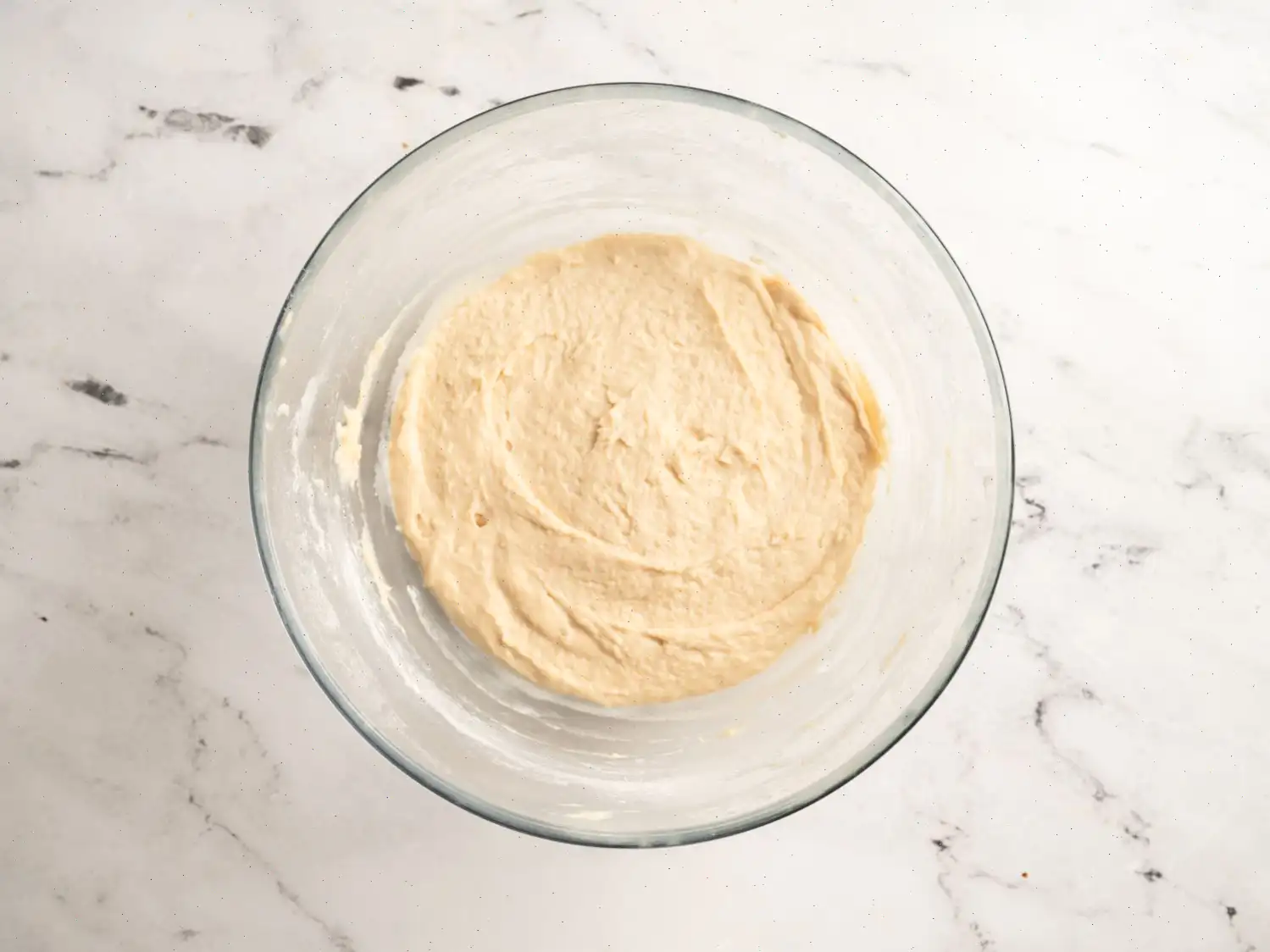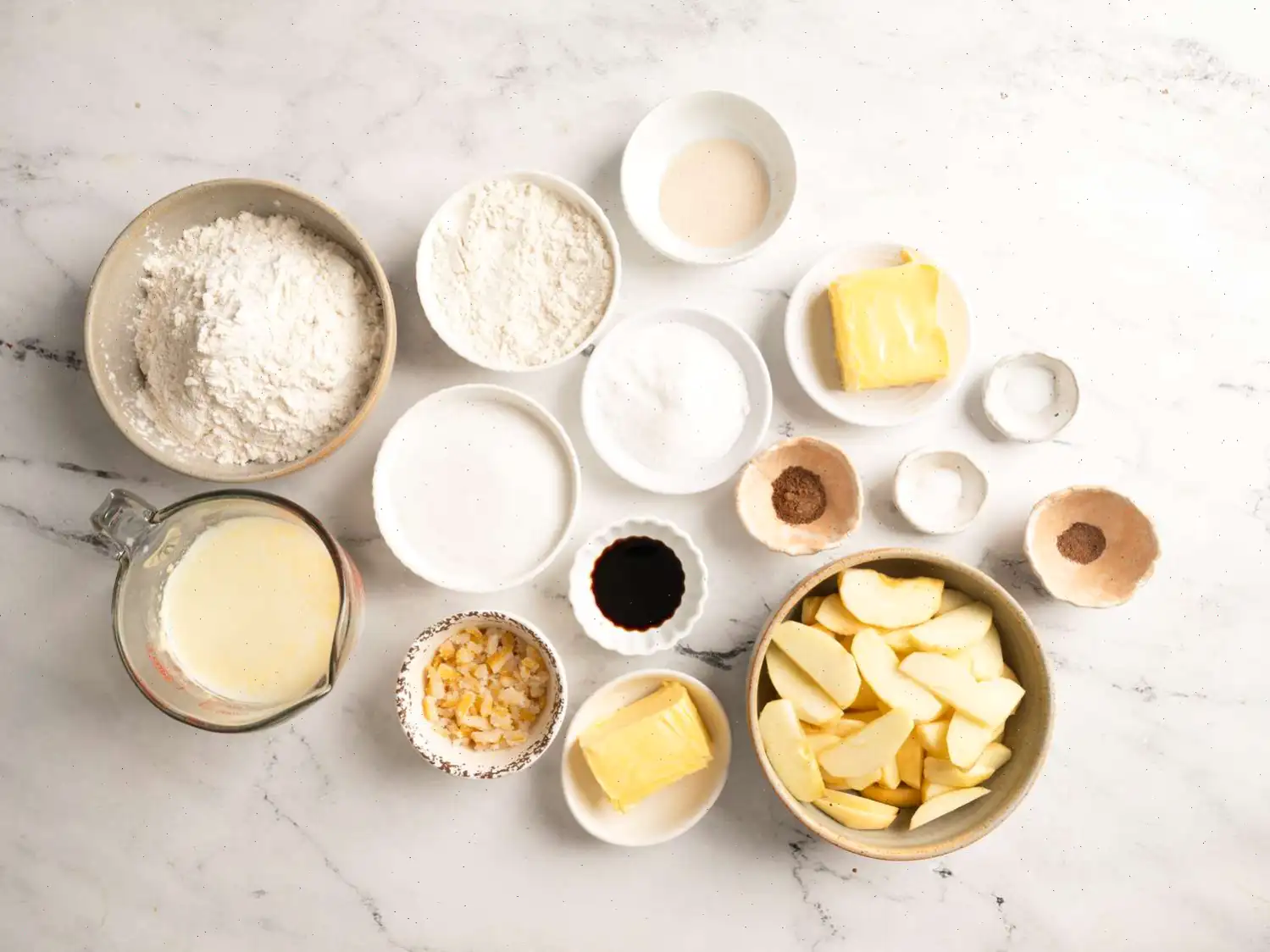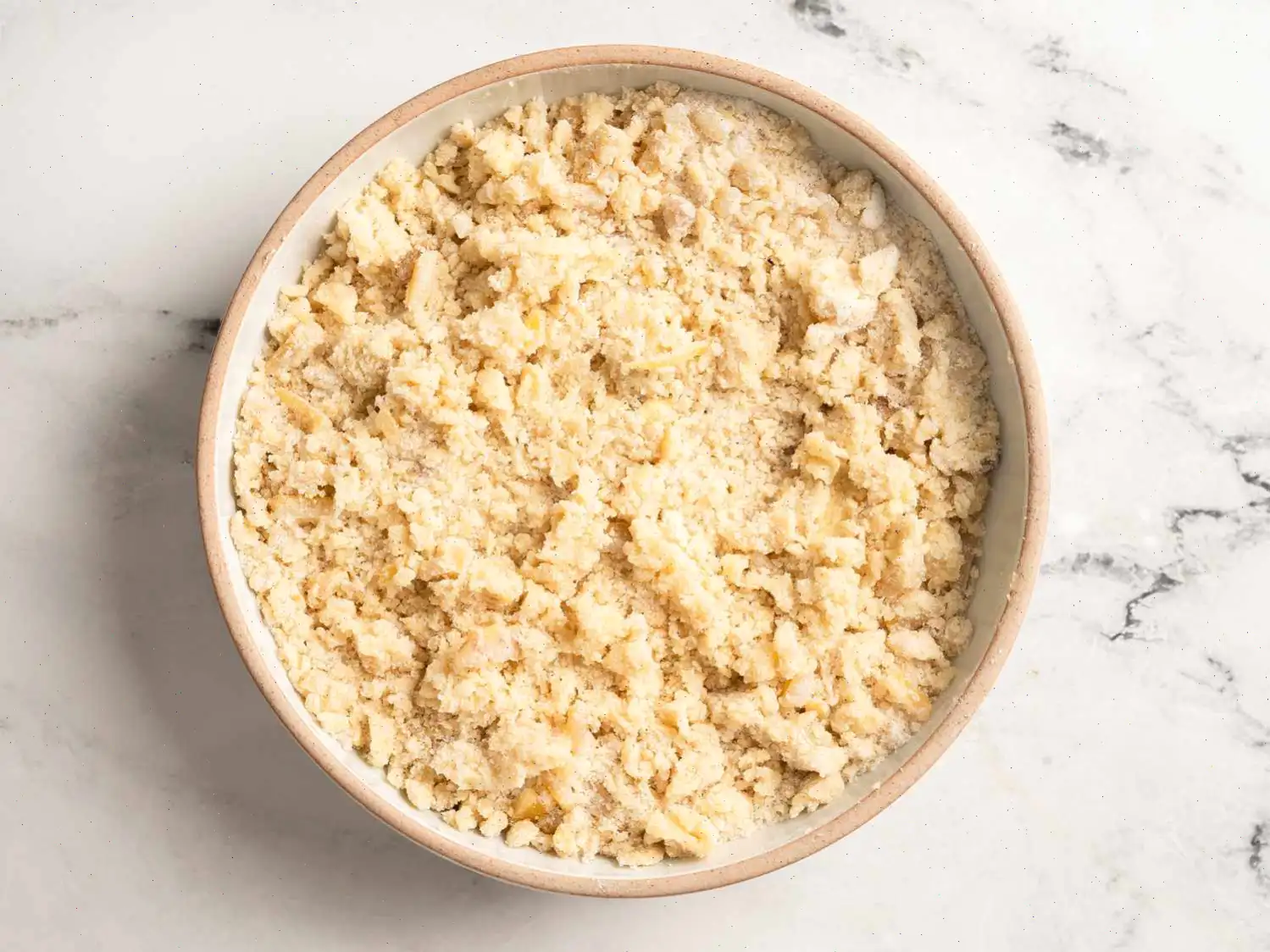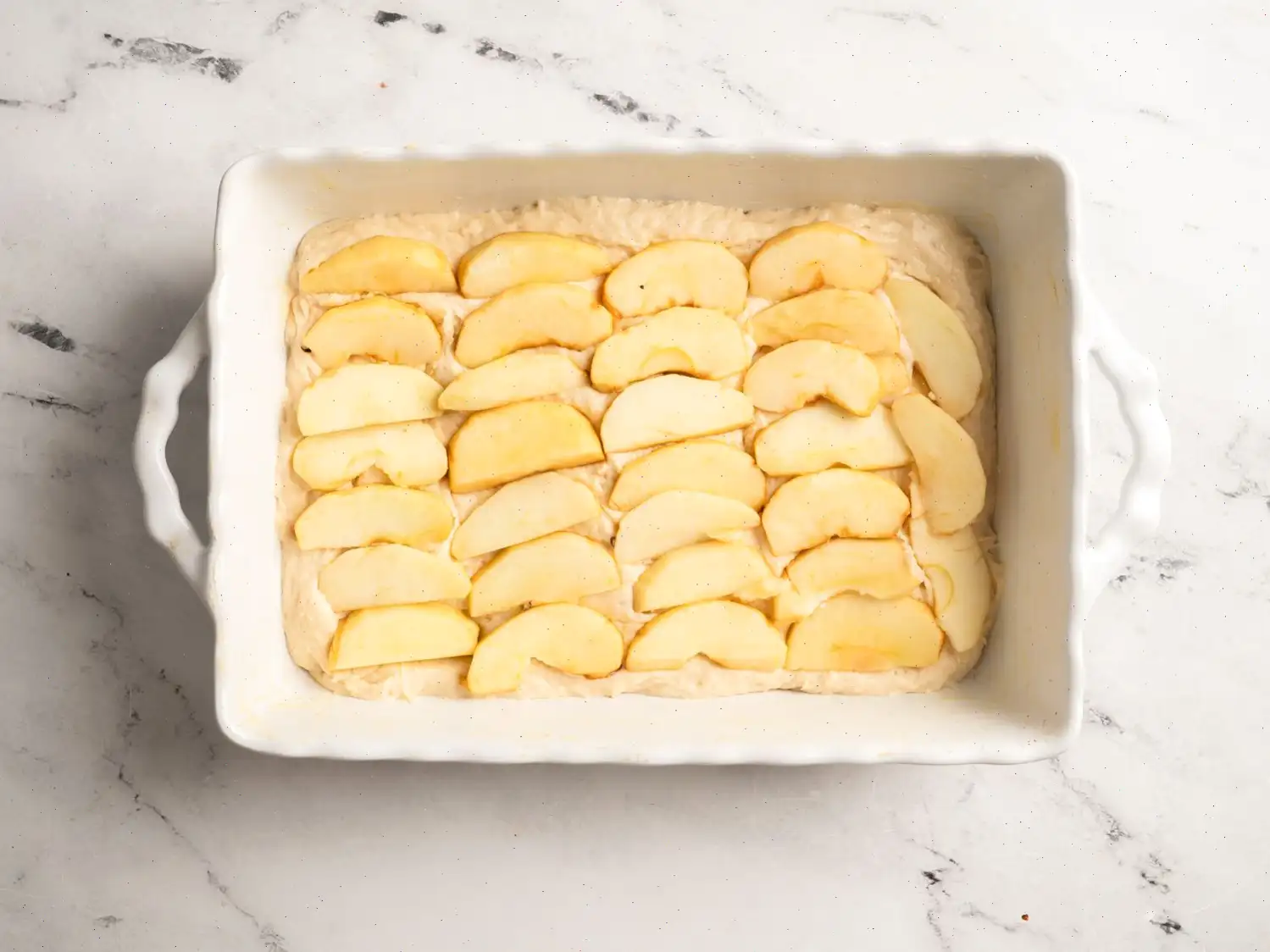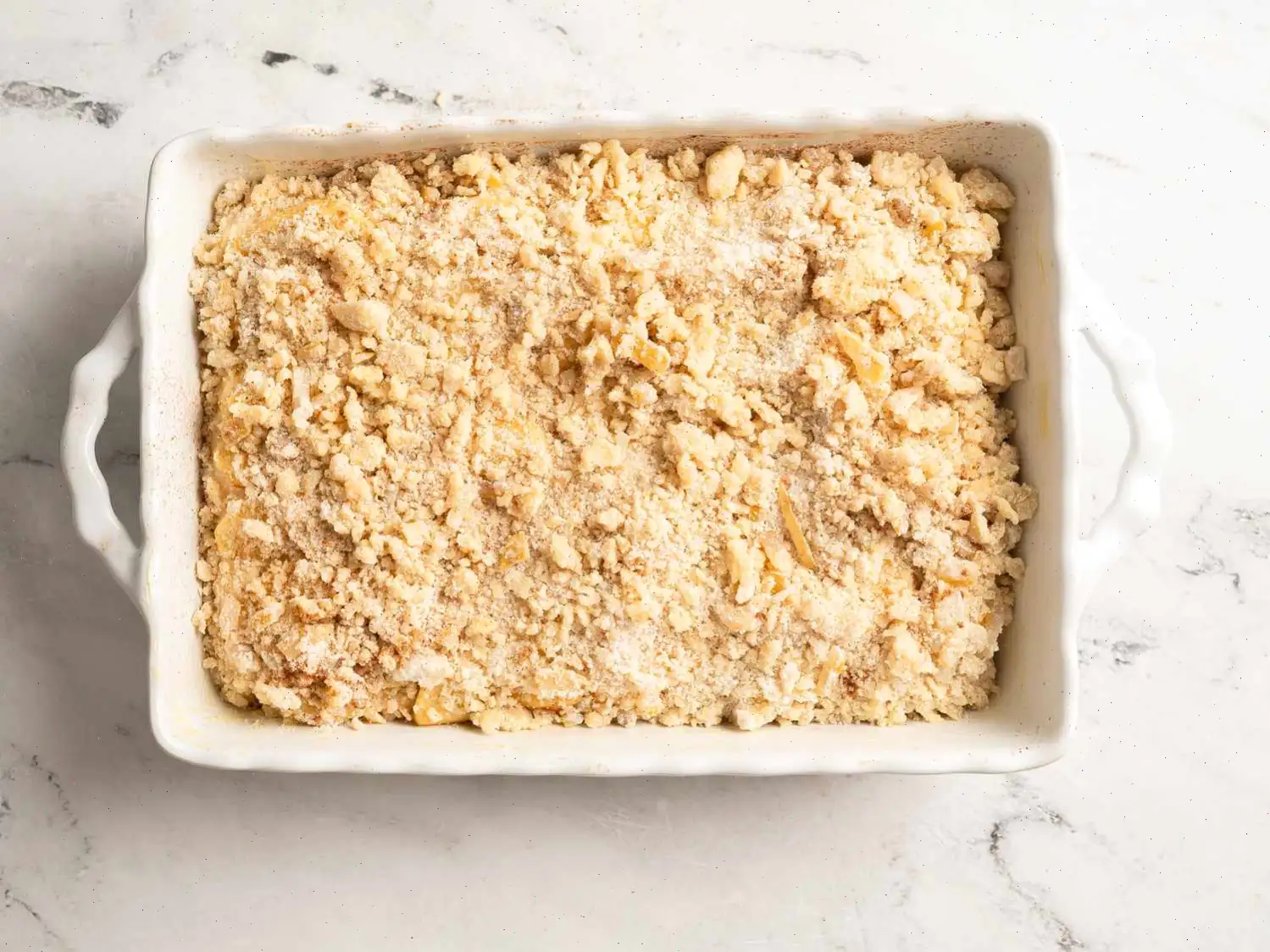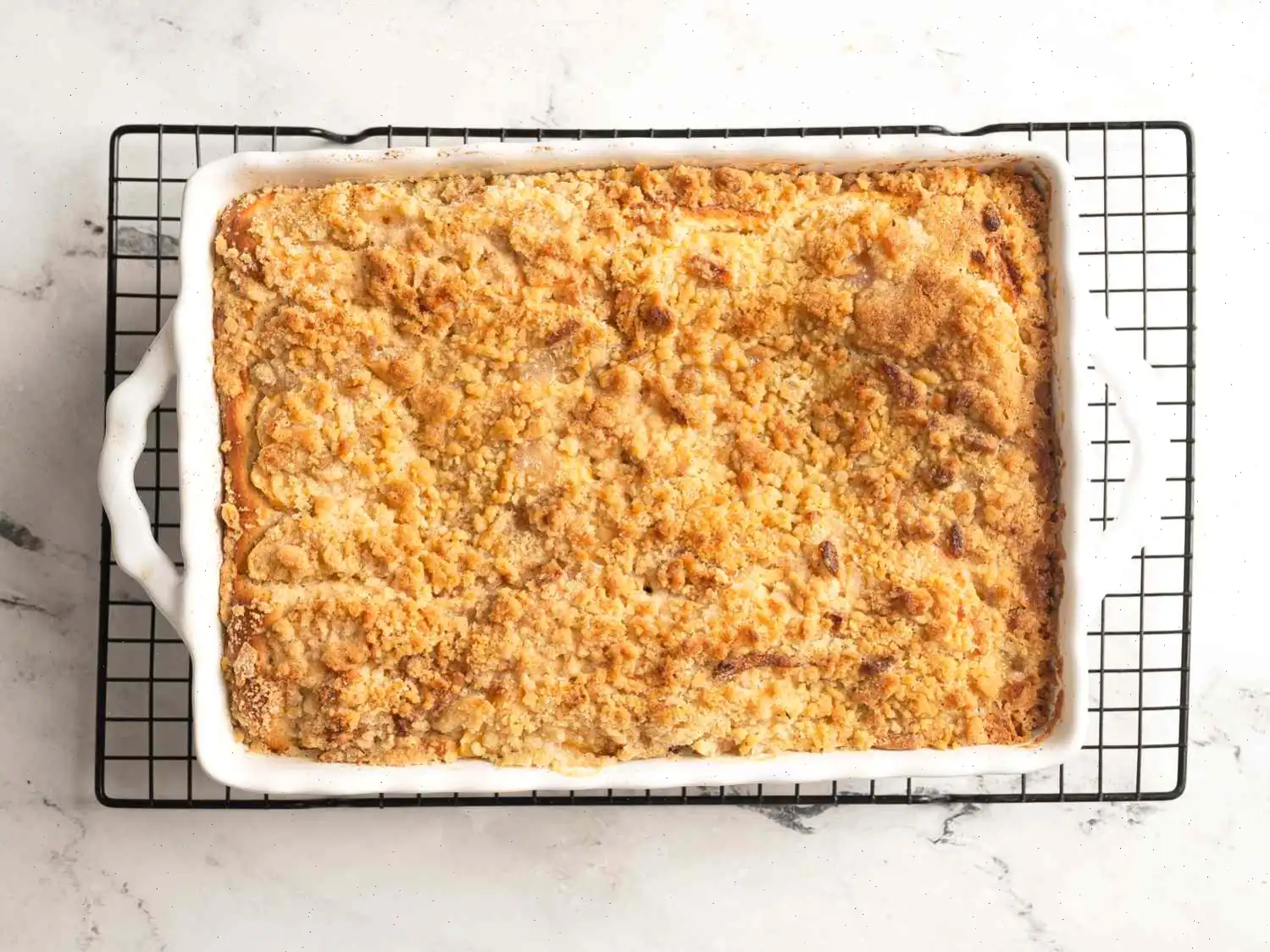
Apfelkuchen (Apple Cake) Recipe
Apple Cinnamon Cake
Ingredients
- 2 cups sifted all-purpose flour
- 1 1 cups warm milk
- cup white sugar
- 1 (.25 ounce) package active dry yeast
- 6 tablespoons butter, softened
- 1 tablespoon vanilla extract
- 1 pinch salt
- 3 large apples - peeled, cored, and sliced
- 1 cup white sugar
- cup sifted all-purpose flour
- 2 ounces candied lemon peel, chopped (Optional)
- teaspoon ground cinnamon
- teaspoon ground nutmeg
- cup butter
Directions
- Gather all the ingredients and prepare a 9x13-inch baking dish or a 9-inch springform pan by greasing the bottom and sides.
- In a large bowl, combine 2 cups flour, warm milk, cup sugar, active dry yeast, 6 tablespoons butter, vanilla extract, and a pinch of salt. Using an electric mixer, beat the ingredients on high until the dough becomes smooth, about 5 minutes.
- Spread the dough evenly into the prepared baking dish, pressing it up the sides slightly.
- Arrange the sliced apples evenly over the dough, pressing them gently into the surface.
- In a separate bowl, mix together 1 cup sugar, cup sifted flour, chopped candied lemon peel (if using), ground cinnamon, ground nutmeg, and a pinch of salt.
- Cut in cup butter using a knife or pastry blender until the mixture resembles coarse crumbs.
- Sprinkle this crumb mixture evenly over the apples.
- Allow the dough to rise for 30 minutes in a warm area.
- While the dough rises, preheat the oven to 400F (200C).
- Once the dough has risen, place the baking dish in the preheated oven and bake for about 35 minutes, or until the cake turns golden brown and the apples are tender.
Nutrition Facts (per serving)
| Nutrition | Per Serving |
|---|---|
| Calories | 370 |
| Total Fat | 14g |
| Saturated Fat | 9g |
| Cholesterol | 37mg |
| Sodium | 136mg |
| Total Carbohydrates | 57g |
| Dietary Fiber | 3g |
| Total Sugars | 30g |
| Protein | 5g |
| Vitamin C | 3mg |
| Calcium | 47mg |
| Iron | 2mg |
| Potassium | 160mg |
* Percent Daily Values are based on a 2,000 calorie diet. Your daily values may be higher or lower depending on your calorie needs.

History and Origins
Apfelkuchen, or Apple Cake, has deep roots in German baking traditions. While apple-based desserts are popular across Europe, the German version stands out with its light, yeasted dough and a subtle sweetness that highlights the natural flavors of fresh apples. The dish is a staple in Bavarian and northern German homes, often served during fall when apples are in season. It has a rich history of being made by grandmothers and passed down through generations, with many families claiming their own versions. The first written records of Apfelkuchen date back to the 18th century, but its popularity spread throughout Europe long before that, likely evolving from various regional apple pies and cakes. Historically, it was baked to celebrate harvest festivals and to welcome the cooler months of the year.
Regional Variations
In Germany, Apfelkuchen varies depending on the region. In Bavaria, the cake tends to have a thicker, more rustic dough, sometimes including almonds or raisins in the filling, while in northern Germany, the cake is lighter, with a more delicate texture. The use of yeast in the dough, common in northern Germany, makes it soft and pillowy, contrasting with other regional German cakes that might use a butter-based dough. In some areas, the cake is topped with a crumbly streusel, while others prefer a simple dusting of powdered sugar. Additionally, apples used can vary, with some regions preferring tart varieties like Granny Smith, while others use sweet apples for a more balanced flavor profile.
How Apfelkuchen Differs from Similar Desserts
Apfelkuchen stands out among other apple cakes or pies for its use of yeast-based dough, which is less common in fruit-based cakes. This dough creates a light, airy texture, unlike traditional American apple pies, which rely on a flaky pie crust. The addition of candied lemon peel and spices like cinnamon and nutmeg further distinguishes Apfelkuchen, giving it a festive and aromatic appeal. Another unique feature is the apple topping, which is typically arranged directly on the dough, rather than being mixed into the batter as in some other apple cakes. This method allows the apples to retain their shape and sweetness during baking, making for a more visually appealing and flavorful dessert.
Where Apfelkuchen is Usually Served
Apfelkuchen is a beloved treat that can be found in German bakeries, particularly during the autumn months when apples are harvested. It is a common dessert served at family gatherings, coffee breaks (known as "Kaffee und Kuchen"), and seasonal festivities. This cake is also often enjoyed as an afternoon snack, paired with a cup of coffee or tea. Its a versatile dessert, equally at home at a formal gathering as in a casual setting. In addition to Germany, Apfelkuchen has gained popularity in other parts of Europe, especially in Austria and Switzerland, where its often served in cafes as a comforting indulgence after a long day.
Fun Facts About Apfelkuchen
- The yeast-based dough of Apfelkuchen is what gives it its distinctive soft, cake-like texture, setting it apart from the more common fruit pies.
- In Germany, Apfelkuchen is often made with a variety of apples, including tart ones like Boskoop, which hold their shape well when baked.
- The cakes topping can vary widely, with some recipes incorporating streusel, while others opt for a simple crumbly sugar topping.
- Apfelkuchen is considered a "comfort food" in Germany, evoking feelings of warmth and nostalgia, especially during family celebrations or holiday gatherings.
- It is a common practice to bake Apfelkuchen on Sundays, making it a perfect cake for "Kaffee und Kuchen," the traditional German coffee and cake break.
FAQ about Apfelkuchen (Apple Cake) Recipe
Comments
Sharon Edwards
01/20/2023 07:53:14 AM
Great Review! I made a few changes to the original recipe: 1. Instead of using 3 apples, I used 4 apples and cut them into small pieces. 2. I substituted nutmeg and cinnamon with 'Apple Spice.' 3. Instead of using lemon peel, I used lemon juice (approximately 1 tsp) and had to add more flour to the top mixture to adjust the consistency. 4. I baked it at 180°C for about 50-60 minutes instead of 200°C. The outcome was insane! It turned out delicious and was incredibly easy to make. This is the type of cake that I'll definitely remember to prepare when I have friends or family over, or when I need to whip up something quick.
Paul Gonzalez
02/23/2025 02:46:59 PM
This recipe is fantastic! It's incredibly easy and fast to prepare. I opted for fresh apricots and skipped the crumbs. Instead, I whipped one egg with 1/2 cup of sugar and poured it over the apricots. This recipe is definitely a keeper!
Kevin Walker
04/06/2025 11:04:43 AM
I made this recipe using "Splenda for Baking" in the batter to accommodate the need for some sugar for the yeast. Unfortunately, my batter turned out quite wet, making it difficult to push it up the sides. Note that you should not beat the dough in a stand mixer for 5 minutes as it may result in a rubbery texture. The recommended 5 minutes of mixing is likely meant for hand beating. I used the last 4 apples from our Golden Delicious tree and despite some browning on the bottom layer, the end result was delicious. I omitted the lemon peel, but found the overall recipe to be versatile and potentially suitable for other fresh fruits like apricots, peaches, or cherries. I particularly enjoyed the three layers: a cake bottom, a fruit center, and a streusel-like topping. However, I felt that the sugar-to-butter ratio in the streusel topping was a bit excessive on the sugar side. I've been searching for a good recipe to bring to work, and this might just be the one. I plan to make this again soon to experiment with some adjustments. Having experienced the delightful treats from German bakeries, this recipe closely resembles, if not replicates, their delectable creations.
Emily Adams
11/20/2023 08:55:06 AM
I love adding fresh lemon zest to my apple dish for a delicious citrus kick. After letting the dough rise for about an hour, I follow the recipe faithfully. I have made this dessert many times and it never disappoints - truly fantastic!
Raymond Allen
05/22/2023 08:22:29 AM
The apple and streusel topping were absolutely amazing! However, what stops me from giving this recipe a 5-star rating is the bread component. I can't say for certain if the richness of whole milk played a role, but the crust ended up overly dark – even after baking for just 25 minutes, it was burnt and hard to eat. Additionally, the overall flavor of the bread was quite lackluster. I might explore using a different crust recipe next time and pairing it with the delicious filling from this one.
Michael Parker
08/30/2024 08:53:05 AM
Absolutely delicious! My mom is German and I spent my childhood in Germany until I was 7. As a teenager, I used to make my mom's apfelkuchen recipe, sometimes substituting applesauce for apples. It was a delightful treat! However, my mom had lost the recipe or couldn't recall it, so I decided to give this recipe a try. Although it's different from my mom's version, it turned out to be equally tasty!


